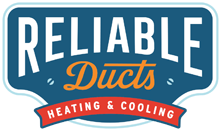As the summer heat rises, your air conditioning system becomes essential for indoor comfort. However, if you’ve ever encountered a situation where your AC unit is blowing warm air instead of cool, it could be due to a frozen evaporator coil. This article will delve into the causes, signs, and solutions for frozen evaporator coils in AC units.
Understanding Frozen Evaporator Coils:
The evaporator coil is a crucial component of your AC system that is responsible for absorbing heat from indoor air. When warm air passes over the coil, moisture condenses on its surface, leading to cooling. However, if airflow is restricted or the coil becomes too cold, condensation can freeze, resulting in a layer of ice buildup.
Causes of Frozen Evaporator Coils:
Several factors can contribute to the formation of frozen evaporator coils:
- Restricted Airflow: Dirty air filters, blocked vents, or closed registers can restrict airflow across the evaporator coil, causing it to become too cold and freeze.
- Low Refrigerant Levels: Insufficient refrigerant in the system can lead to a drop in pressure and temperature, causing the evaporator coil to freeze.
- Faulty Components: Issues with the blower motor, fan, or thermostat can disrupt the proper functioning of the AC system, leading to frozen evaporator coils.
Signs of Frozen Evaporator Coils:
Detecting frozen evaporator coils in your AC unit is relatively straightforward. Look out for the following signs:
- Warm Air: If your AC unit is blowing warm air instead of cool, it could indicate that the evaporator coil is frozen.
- Reduced Airflow: A decrease in airflow from your vents is a common sign of frozen evaporator coils.
- Ice Buildup: Visible ice buildup on the evaporator coil or along the refrigerant lines clearly indicates frozen coils.
Addressing Frozen Evaporator Coils:
If you suspect that your AC unit has frozen evaporator coils, it’s essential to take action promptly to prevent further damage to the system:
- Turn Off the AC: Switch off the AC unit to prevent additional ice buildup and allow the coil to thaw naturally.
- Check Airflow: Ensure that air filters are clean, vents are unobstructed, and registers are open to promote proper airflow.
- Schedule Professional Service: Contact a qualified HVAC technician to inspect and repair the underlying cause of the frozen evaporator coils, whether it’s low refrigerant levels or faulty components.
Conclusion:
Frozen evaporator coils are a common issue that can disrupt the performance of your AC unit and compromise indoor comfort. By understanding the causes, signs, and solutions for dealing with frozen coils, you can take proactive steps to ensure the efficient operation of your AC system and maintain a relaxed and comfortable home during the summer months. Regular maintenance and prompt attention to any issues can help prevent frozen evaporator coils and keep your AC unit running smoothly for years.
